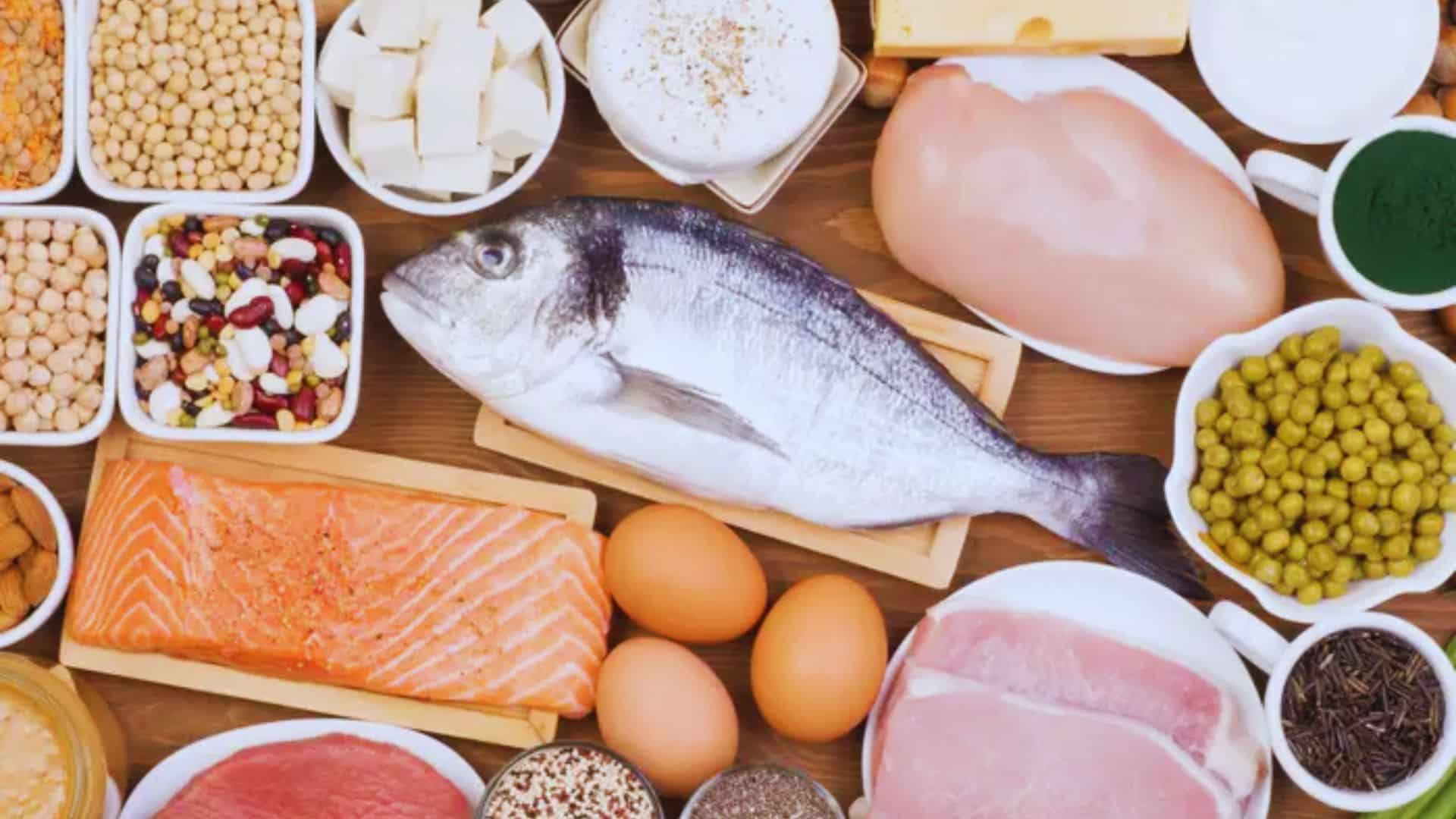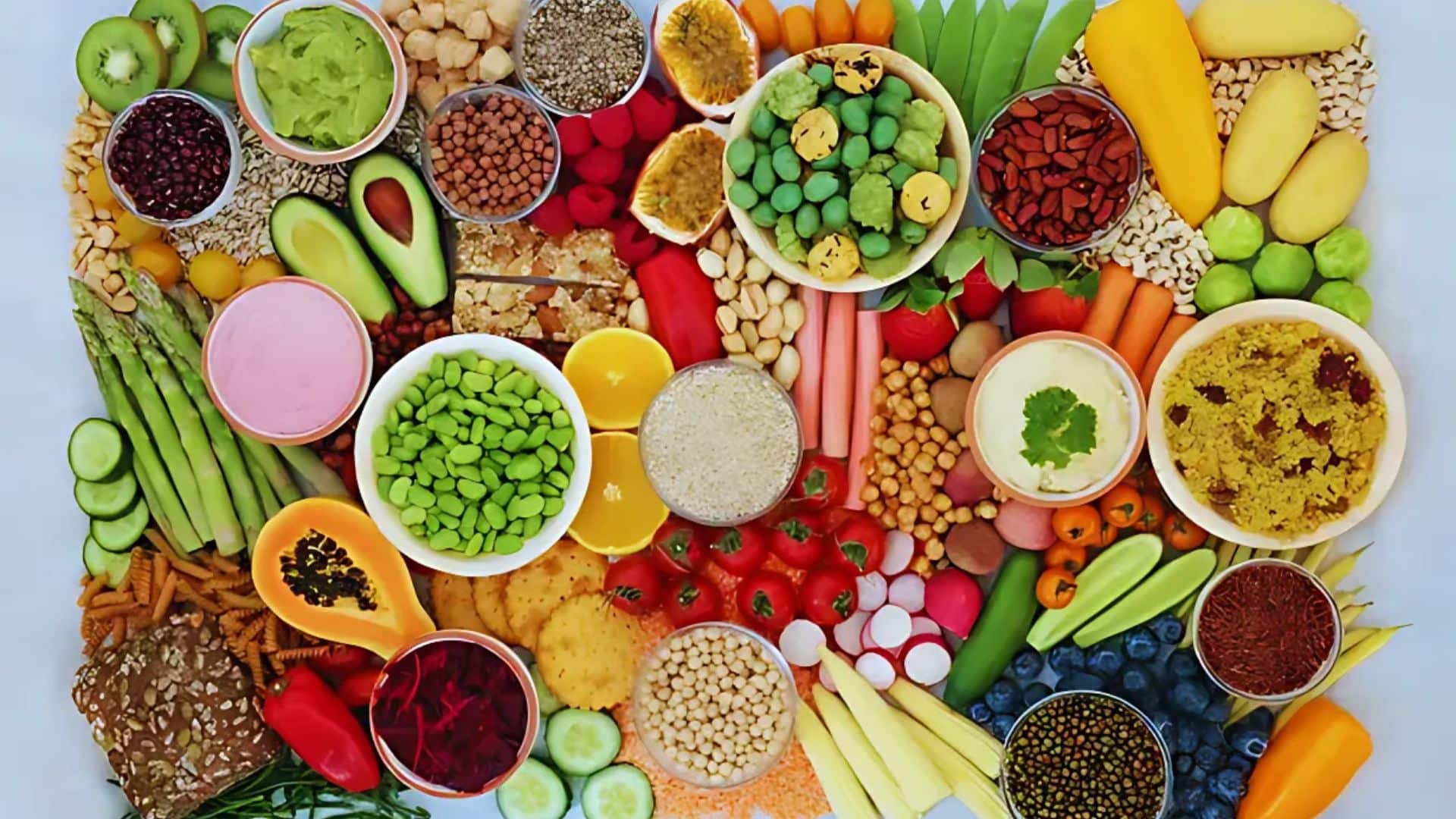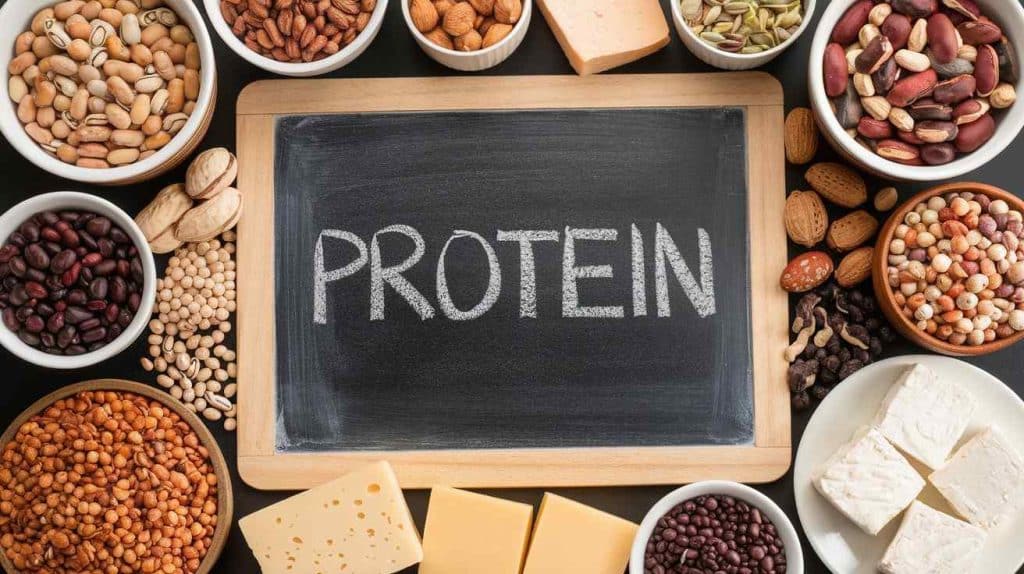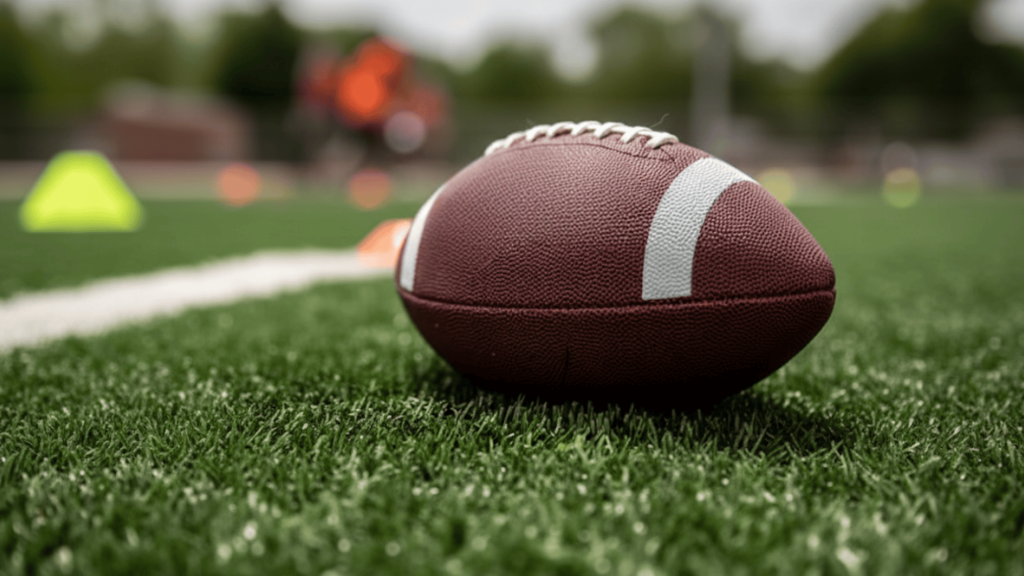Are you struggling to find the right foods that can help you build lean muscle while shedding those extra pounds?
Many think they have to choose between muscle growth and weight loss, but the truth is simpler than you might expect.
The secret lies in choosing the right high-protein foods that work double duty for your fitness goals.
Protein isn’t just about building bigger biceps; it’s your metabolism’s best friend and your hunger’s worst enemy.
Why Protein is Your Secret Weapon for Both Goals?
Protein plays a unique role in your body, making it perfect for simultaneous muscle building and fat loss.
When you eat protein, your body burns more calories just digesting it compared to carbs or fats. This is called the thermic effect of food.
- Builds and repairs muscle tissue after workouts
- Keeps you full longer, reducing overall calorie intake
- Boosts metabolism by up to 30% temporarily
- Preserves lean muscle during weight loss
Most adults need about 0.8 to 1.2 grams of protein per kilogram of body weight for basic health.
However, if you’re aiming to build muscle, target 1.6 to 2.2 grams per kilogram. That means a 70kg person should aim for 112-154 grams of protein daily for optimal muscle gain.
Top Animal-Based High-Protein Foods

Discover the ultimate animal-based high-protein foods that deliver a nutritional punch, ideal for enhancing your diet and fueling your active lifestyle.
Lean Meats and Poultry
Chicken Breast leads the pack with 31 grams of protein per 100g and minimal fat. It’s versatile, affordable, and perfect for meal prep.
Lean Beef provides 26 grams of protein per 100g plus essential minerals like iron and zinc. Choose cuts like sirloin or eye of round for the best protein-to-fat ratio.
Turkey offers 29 grams of protein per 100g and works great in everything from burgers to stir-fries.
Fish and Seafood
Salmon delivers 25 grams of protein per 100g along with heart-healthy omega-3 fatty acids. The healthy fats actually support muscle recovery.
Tuna packs 30 grams of protein per 100g and comes canned for convenience. It’s one of the most affordable protein sources available.
Shrimp provides 24 grams of protein per 100g, with virtually zero carbs, making it an ideal choice for low-carb dieters.
Dairy and Eggs
Greek Yogurt contains 15-20 grams of protein per cup, depending on the brand. Choose plain varieties to avoid added sugars.
Cottage Cheese offers 28 grams of protein per cup and works great as both a snack and a cooking ingredient.
Eggs provide 6 grams of complete protein each. They’re incredibly versatile and budget-friendly at around $2-3 per dozen.
Best Plant-Based Protein Options

Uncover a variety of nutritious and delicious plant-based protein sources that can enhance your diet while supporting a healthy lifestyle.
Legumes and Beans
Looking for a high-protein foods vegetarian list? Start here:
Lentils pack 18 grams of protein per cooked cup plus fiber that keeps you satisfied. Red lentils cook fastest at just 15 minutes.
Chickpeas deliver 15 grams of protein per cup and can be incorporated into everything from salads to homemade hummus.
Black Beans provide 15 grams of protein per cup and pair perfectly with rice to complete the amino acid profile.
Nuts, Seeds, and Grains
Quinoa stands out among grains with 8 grams of complete protein per cooked cup. It cooks like rice but offers much more nutrition.
Hemp Seeds contain 10 grams of protein per 3 tablespoons and blend invisibly into smoothies.
Almonds provide 6 grams of protein per ounce, making them an ideal choice for snacking or adding crunch to meals.
Budget-Friendly Protein Sources for Weight Loss
Eating high-protein food doesn’t have to break the bank. Here are the best cheap high-protein foods for students and anyone watching their wallet:
| Food | Protein per serving | Cost per gram of protein |
|---|---|---|
| Dried lentils | 18g per cup | $0.02 |
| Canned tuna | 20g per can | $0.04 |
| Eggs | 12g per 2 eggs | $0.03 |
| Peanut butter | 8g per 2 tbsp | $0.05 |
| Milk | 8g per cup | $0.04 |
Smart Protein Snack Ideas for Weight Loss and Muscle Growth
Need high-protein snacks under 200 calories? Try these:
- Greek yogurt with berries (150 calories, 15g protein)
- Hard-boiled eggs (140 calories, 12g protein)
- String cheese with apple slices (180 calories, 8g protein)
- Protein smoothie with protein powder and spinach (160 calories, 20g protein)
- Hummus with vegetables (120 calories, 6g protein)
High-Protein Breakfast Ideas No Eggs
Not an egg fan? Start your day with these high-protein breakfast ideas, no eggs:
Greek Yogurt Parfait: Layer Greek yogurt with berries and nuts for 20+ grams of protein.
Protein Smoothie Bowl: Blend protein powder with frozen fruit and top with seeds and granola.
Cottage Cheese Bowl: Mix cottage cheese with fruit or savory vegetables for a unique morning meal.
Overnight Oats: Add protein powder or Greek yogurt to your oats for a protein boost.
Timing Your Protein Intake
Spread your protein intake throughout the day for optimal benefits. Aim for 20-30 grams per meal and 10-15 grams per snack. This keeps your muscles constantly supplied with amino acids for growth and repair.
Post-workout is especially important. Try to eat protein within 2 hours of training to maximize muscle protein synthesis.
Conclusion
Building muscle while losing weight doesn’t require complicated supplements or expensive meal plans. The key is choosing the right high-protein foods and eating them consistently throughout your day.
Whether you prefer animal- or plant-based proteins, there are affordable options that cater to every lifestyle and budget. Remember, the best protein source is the one you’ll actually eat regularly.
Start with one or two new protein foods this week, then gradually expand your options as you discover what works for your taste buds and schedule.
Focus on whole foods first, stay consistent, and let your results speak for themselves.
What’s your biggest challenge when it comes to getting enough protein in your diet? Share your struggles or favorite high-protein recipes in the comments below!






































